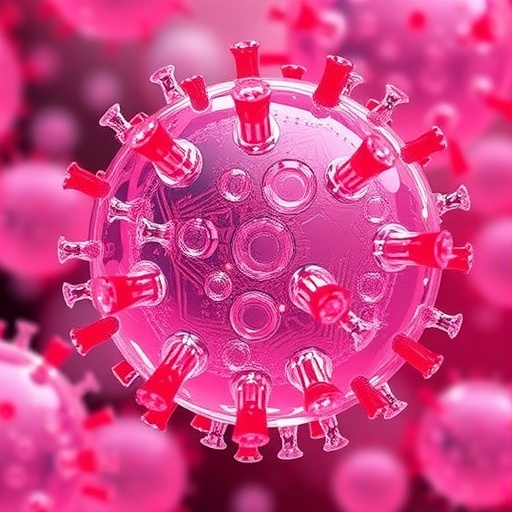In a groundbreaking study led by researchers Xu, D., Liu, S., and Hu, W., the reliability and validity of the Chinese version of the Nursing Surveillance Scale (NSS) have been rigorously tested, marking a significant advancement in nursing practices and research methodologies. This cross-sectional study, highlighted in the recent volume of BMC Nursing, sheds light on a critical component of nursing: surveillance. Nursing surveillance pertains to the systematic collection of data to monitor patients’ health status, ensuring immediate and appropriate responses to alterations in their conditions.
Surveillance in nursing is not merely an academic concept; it carries extensive implications for patient care and overall health system efficiency. As healthcare faces increasing pressures related to quality and safety, robust tools for nursing surveillance have become imperative. The NSS aims to standardize how nursing professionals observe, record, and react to patient data. Validating this scale within a Chinese context underscores the importance of cultural relevance in healthcare measurement tools, thereby enhancing their utility across diverse patient populations.
The study meticulously evaluates the NSS using statistical methods to confirm its reliability and validity among Chinese nurses. High reliability indicates that the scale yields consistent results over repeated applications, which is vital for maintaining care continuity and safety. Validity, on the other hand, confirms that the scale accurately measures what it is intended to, capturing the complexities of patient surveillance accurately. This dual validation establishes a robust foundation for the NSS’s application in clinical settings, ensuring that it not only serves theoretical purposes but also translates into tangible benefits for patient care.
Moreover, the researchers sampled a diverse group of nursing professionals, enabling a comprehensive analysis of the NSS’s effectiveness. This approach aligns with contemporary research practices, emphasizing diversity and inclusivity in study populations. By engaging nurses from various specializations and areas, the study ensures that the conclusions drawn reflect a broad spectrum of nursing experiences, enhancing the generalizability of the findings. Such methodological rigor is commendable, setting a benchmark for future research in nursing and healthcare.
One of the intriguing aspects of this study is its alignment with the growing emphasis on evidence-based practices in nursing. The integration of standardized measurement tools like the NSS within nursing practice advocates for a culture of accountability and continuous improvement in patient care. As healthcare continues to evolve, equipping nursing professionals with validated tools not only enhances their capacities but also fosters a safer environment for patients.
The implications of this study extend beyond the immediate realm of nursing. For policymakers and health administrators, the findings spotlight the necessity of implementing standardized tools within clinical settings. This is crucial for the overall enhancement of healthcare quality and efficiency. By prioritizing research-backed methodologies like the NSS, healthcare systems can better allocate resources, monitor patient outcomes effectively, and refine their operational frameworks to support nursing activities more robustly.
Additionally, this study serves to elucidate the nuances of cultural adaptation in health measurement tools. Different health systems exhibit various patterns of patient care, communication, and interaction among professionals. Therefore, validating tools like the NSS within specific cultural contexts contributes to the global body of nursing knowledge. It emphasizes the need for region-specific adaptations of health measures, promoting a more profound understanding of patient care dynamics worldwide and encouraging local research initiatives that resonate with national healthcare priorities.
Furthermore, the researchers highlight the role of technology in enhancing nursing surveillance efficacy. With the advent of electronic health records and real-time monitoring systems, nurses now have unprecedented access to patient information at their fingertips. The NSS can be effectively integrated with technological platforms, fueling further advancements in how patient data is collected and analyzed. This technological synergy can drastically improve nursing responses to health status changes, leading to more informed decision-making and reducing the risk of adverse outcomes.
Moreover, as healthcare continues to shift towards more personalized approaches, the need for comprehensive surveillance systems that cater to individualized patient needs is paramount. The NSS offers flexibility and adaptability, which are crucial traits for nursing constructs intending to serve a heterogeneous population. This versatility positions the scale as a vital asset in tailoring patient care, adapting interventions based on real-time data gleaned from vigilant nursing surveillance.
Another noteworthy aspect of this research is its potential to inspire further studies in cross-cultural healthcare measurement. With globalization encouraging greater interaction and collaboration among health professionals across borders, a validated measure like the NSS could be pivotal in opening dialogues around shared nursing values and practices. Future research could explore the scale’s applicability in other Asian countries or even across various health systems worldwide, enriching the testament of nursing practices through shared learning and common goals.
The findings from Xu, D. et al. not only reinforce the need for reliable nursing tools but also highlight a collective responsibility in the nursing community to embrace ongoing education and training. As a cornerstone of modern healthcare, nurse education programs must prioritize the integration of validated surveillance tools, ensuring that upcoming professionals are well-versed in evidence-based practices. This focus on education will ultimately lead to heightened proficiency amongst nursing cohorts and improves patient outcomes in the long run through superior surveillance practices.
As the academic discussion surrounding the nursing surveillance scale progresses, it is essential for healthcare practitioners to stay informed of emerging evidence, proper applications, and continuous updates regarding the NSS. Engaging with promising research like that of Xu et al. could facilitate substantial improvements in the operational practices of nurses globally, bolstering their capacity to provide exceptional care in an increasingly complex healthcare landscape.
In conclusion, Xu, D., Liu, S., and Hu, W.’s rigorous assessment of the Nursing Surveillance Scale signifies a pivotal advancement in nursing research and practice. With its proven reliability and validity, the NSS offers an indispensable tool for enhancing nursing surveillance, thereby directly improving patient outcomes. As the healthcare field continues to evolve rapidly, aligning nursing practices with evidence-based research becomes imperative for fostering quality care and resilience in an unpredictable world.
Subject of Research: Nursing Surveillance Scale (NSS)
Article Title: Reliability and validity testing the Chinese version of the nursing surveillance scale: a cross-sectional study
Article References:
Xu, D., Liu, S., Hu, W. et al. Reliability and validity testing the Chinese version of the nursing surveillance scale: a cross-sectional study. BMC Nurs 24, 1196 (2025). https://doi.org/10.1186/s12912-025-03859-3
Image Credits: AI Generated
DOI: 10.1186/s12912-025-03859-3
Keywords: nursing surveillance, reliability, validity, Nursing Surveillance Scale, cross-sectional study, healthcare quality, evidence-based practice.
Tags: Chinese Nursing Surveillance Scalecross-sectional nursing studycultural relevance in healthcarehealthcare quality and safetyimproving patient care through surveillancenursing data collection methodsnursing research methodologiesnursing surveillance implicationspatient health monitoring toolsreliability and validity in nursingstandardized nursing practicesstatistical evaluation in nursing





